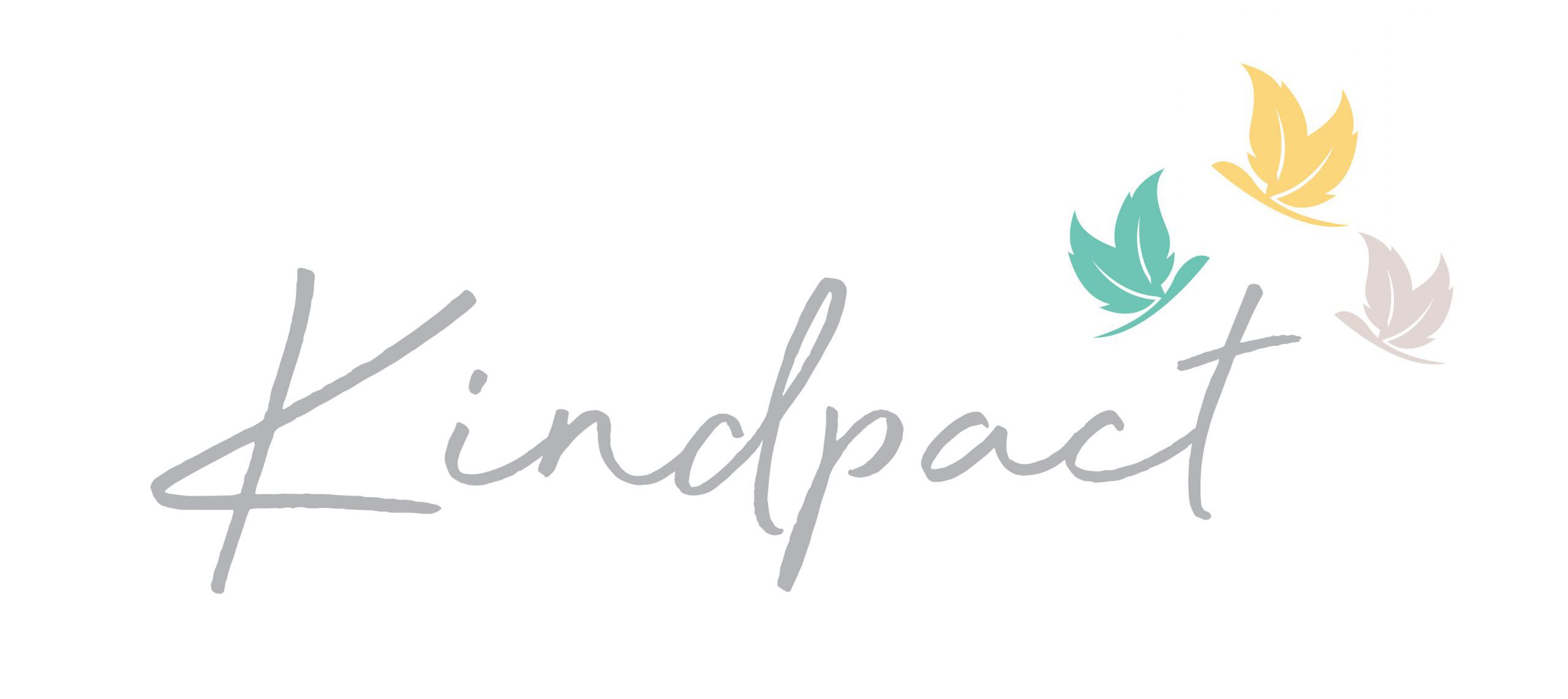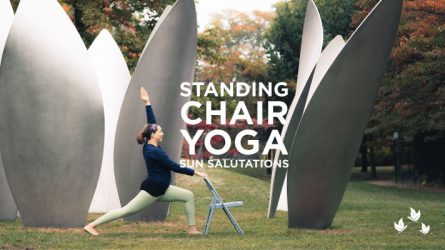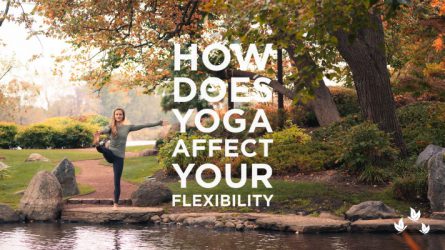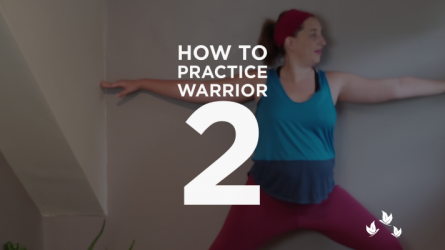Through centuries of experimentation, yoga asana has developed to become a highly efficient, precise science of tuning the body and mind. It includes a range of different movements from backbends and forward folds to static strength holds and twists. It targets every aspect of bodily health from the internal organs and joints up to the muscles, tissues and skin.
Seated yoga poses are the perfect example of the efficiency and completeness that characterizes yoga asana.
Taking advantage of the stability provided by being firmly rooted to the ground, seated Yoga asana can help you develop flexibility and strength while entering deeper states of relaxation and awareness.
Who can benefit from seated yoga poses?
While seated yoga poses can benefit anyone with a body capable of movement, it is particularly useful for:
- Elderly people with compromised mobility, bad balance or chronic pain which makes it difficult to stand
- People who can’t stand or find it difficult to practice standing poses
- Athletes who want to work on greater flexibility and connection with their bodies
- Anyone recovering from an injury
- Dancers/gymnasts who want to enhance their posture and alignment
Benefits of seated yoga poses
Improves focus and mindfulness
The stability and static nature of seated yoga poses enables deeper levels of awareness of the body and breath. If practiced regularly, this mindfulness will stay with you through the day and you will find it easier to fight distraction.
Builds a foundation for proper alignment
Since you are not moving too much in seated yoga poses, you can really pay attention to the alignment of your back, knees, hips and ankles. Seated yoga poses work on the healthy alignment of the body through a balance of strength and flexibility. This bodily understanding of alignment is crucial to maintain the integrity of the joints and prevent injury in more advanced poses.
Reduces stress and anxiety
Seated yoga poses are generally held for a few minutes with the entire attention directed towards the breath. This takes away energy from the body’s stress response, activating the parasympathetic nervous system. Seated yoga asanas are thus potent tools against stress, anxiety and other overwhelming emotions.
Improves posture
Seated yoga poses promote flexibility in the hips and hamstrings while simultaneously strengthening the back, core, glutes and thighs. This is the perfect recipe to establish good posture and recover from a predominantly sedentary lifestyle. Seated yoga poses are thus great to practice before meditation or after long periods of sitting on a chair.
Detoxifies internal organs
Seated yoga poses involve a lot of twists that massage and strengthen the abdomen. When performed on an empty stomach, these poses wring out excess toxins from the internal organs and enable the flow of fresh, oxygenated blood.
7 Beginner-Friendly Seated Yoga Poses
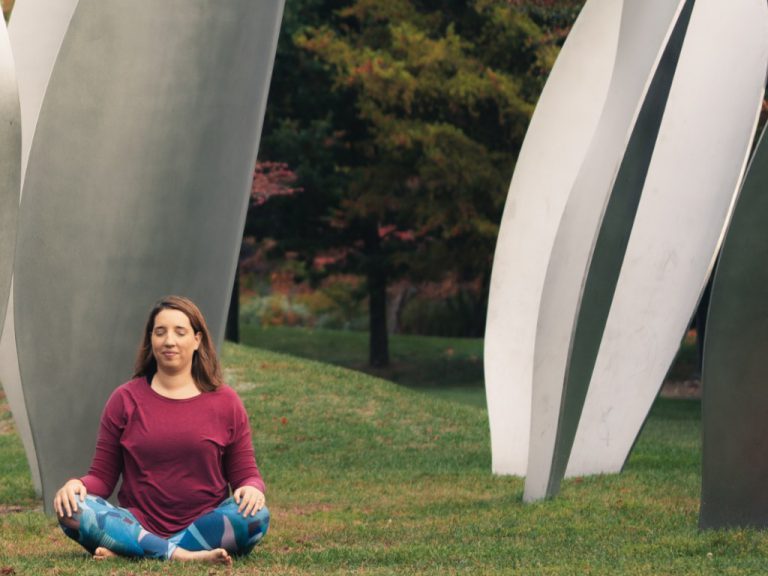
Easy Pose (Sukhasana)
Sukhasana is a gentle hip-opener and is a good pose to align your knees and hips and establish good posture. For this pose, tuck your feet under the opposite thigh to find a comfortable cross-legged position. If your knees are very high off the ground, sit on a cushion or block to help keep your spine straight. Stay here a few minutes, closing your eyes, breathing deeply and setting an intention for your practice. With regular practice, you should be able to stay in this pose for prolonged periods of meditation and pranayama.
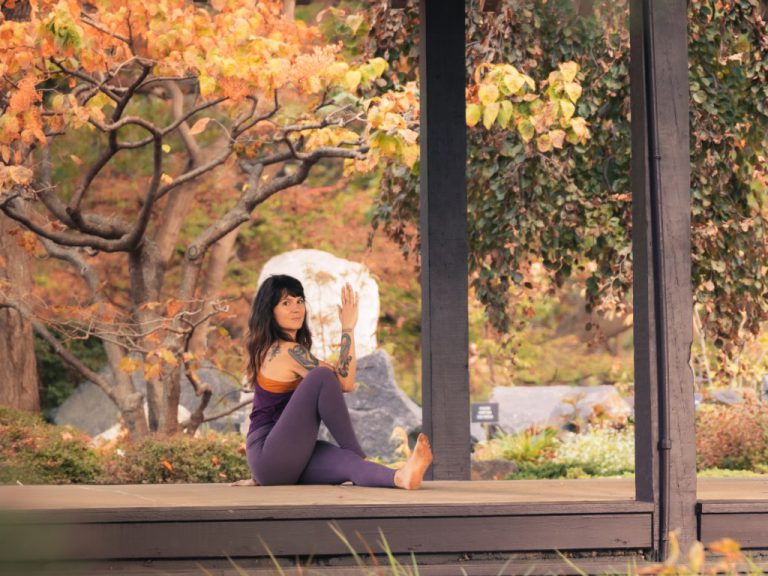
Marichi’s Pose (Marichyasana III)
This twist is a wonderful way to massage and cleanse the internal organs while opening the shoulders and hips. Sit with your feet stretched out in front of you and spine straight. Bend the right knee, keeping the foot firmly planted on the floor. Inhale, lengthen the spine and exhale twist to your right, bringing the left arm to wrap around the outside of the right thigh. Bring the right arm from behind you to hold the left wrist. If you cannot do this, use a strap to make the connection. Make sure your sit-bones remain firmly planted on the floor. Stay here for 10 breaths lengthening with every inhale and twisting deeper with every exhale. Repeat on the other side.
Hero’s Pose (Virasana)
This pose is an excellent way to stretch out the lower body while strengthening the spine. Bend your knees and sit on your heels. Gently guide the legs apart and bring your tailbone to meet with the floor in between your heels. If this hurts your knees, you can place a blanket or towel under them. Additionally, you can sit on top of a block if it is too intense. Stay here for 10 deep abdominal breaths.
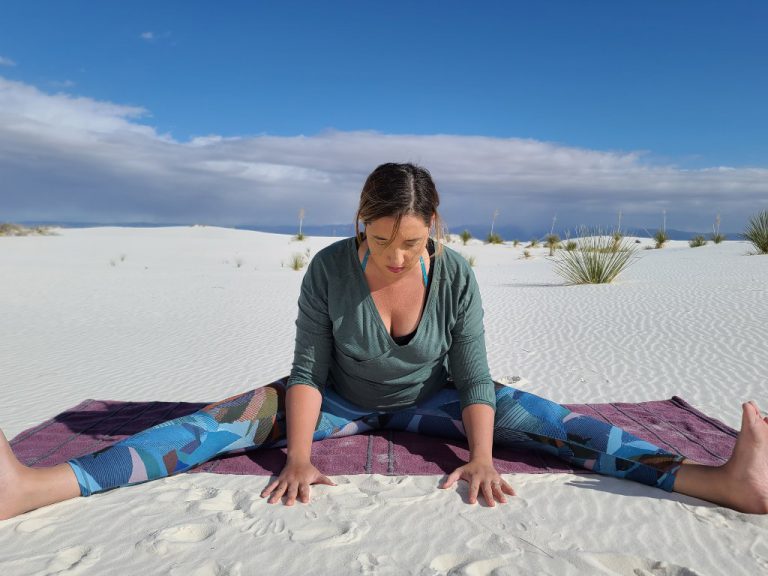
Wide-Angle Seated Forward Bend (Upavistha Konasana)
This pose is a wonderful hip-opener that strengthens the inner thighs and lower back. Spread your legs out as wide as you can while maintaining a straight spine. Spin your inner thigh outward and up and keep your toes flexed. Inhale and lengthen the spine, grabbing your toes, shins or thighs. Exhale and fold forward with a straight spine and neck. Stay here for 10 deep breaths.
Cow Face Pose (Gomukhasana)
This pose is a deep shoulder opener that strengthens the upper back and arms while stretching the hips. Stack your knees over each other with the feet on the outside of the opposite buttock. If this is difficult, raise your hips by sitting on a blanket, cushion or block. Stretch your right arm out to a T. Bend the elbow and bring your arm behind you back with the palm facing backward and fingers pointing up. Push the hand as far up your back as possible. Raise your left-hand overhead, bend the elbow, and bring the fingers to clasp the fingers of the right hand. You can also use a strap or your clothes to make the connection. Stay here for 10 long breaths. Repeat on the other side.
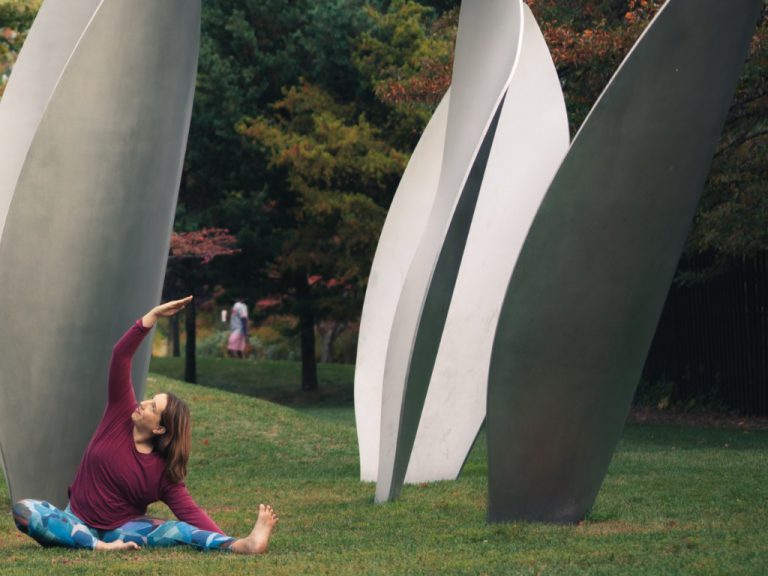
Revolved Head to Knee Pose (Parivrtta Janu Sirsana)
This pose opens up the hamstrings and offers a deep side stretch of the body, while strengthening the back, thighs and glutes. Come into a seated position with your legs stretched out in front of you and spine straight. Bend the right knee and bring the right heel up to your inner thigh, allowing the knee to open to the right. Inhale and lengthen the spine and exhale to bring your right fingers to grab your left toes. If this is not possible, use a strap or grab onto the left shins or thigh. Bring your left hand from under the right arm to rest on your right knee. With every inhale lengthen your spine and with every exhale twist. You should aim to look at the ceiling from under your right arm. Stay here for 10 breaths. Repeat on the other side.
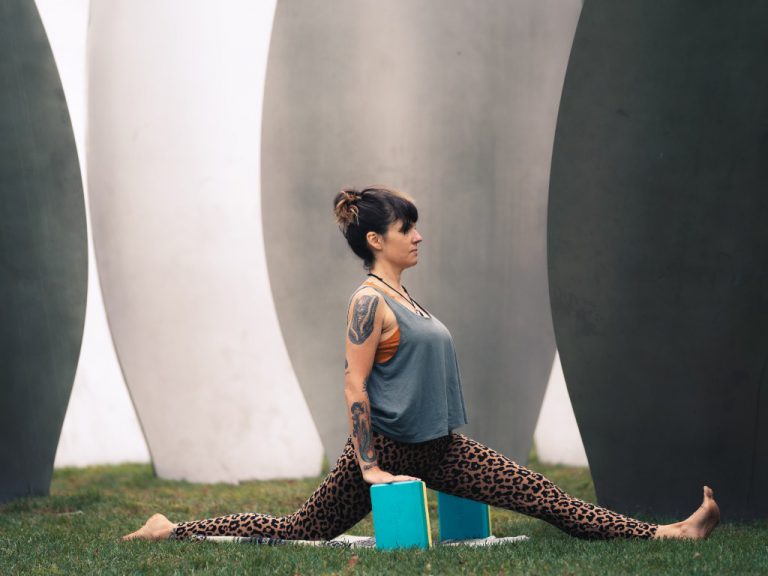
Monkey Pose (Hanumanasana)
Hanumanasana offers a deep hamstring and hip stretch. The full expression of the pose is a front-facing split. Come into a table top position with your shoulders above your wrists and your hips above your knees. Bring your right foot in front of you, bending the knee at a right angle degree. Gently straighten the right knee. You can stay here trying to lengthen your back to bring your stomach to your thighs. If you can go deeper, gently move your left leg back and your right foot forward until both legs are completely straight. Stop at any point when you reach your limit and stay there for a few breaths. Make sure your hips are squared to the front of the mat. Repeat on the other side.
Seated yoga poses with their static holds and deep stretches enable the practitioner to enter into a deep understanding of the body. The space within the poses will allow you to notice your habits and patterns when faced with discomfort and resistance from the body. It will teach you the art of surrender and the ability to unite the body and mind to bring about deep personal transformation.
